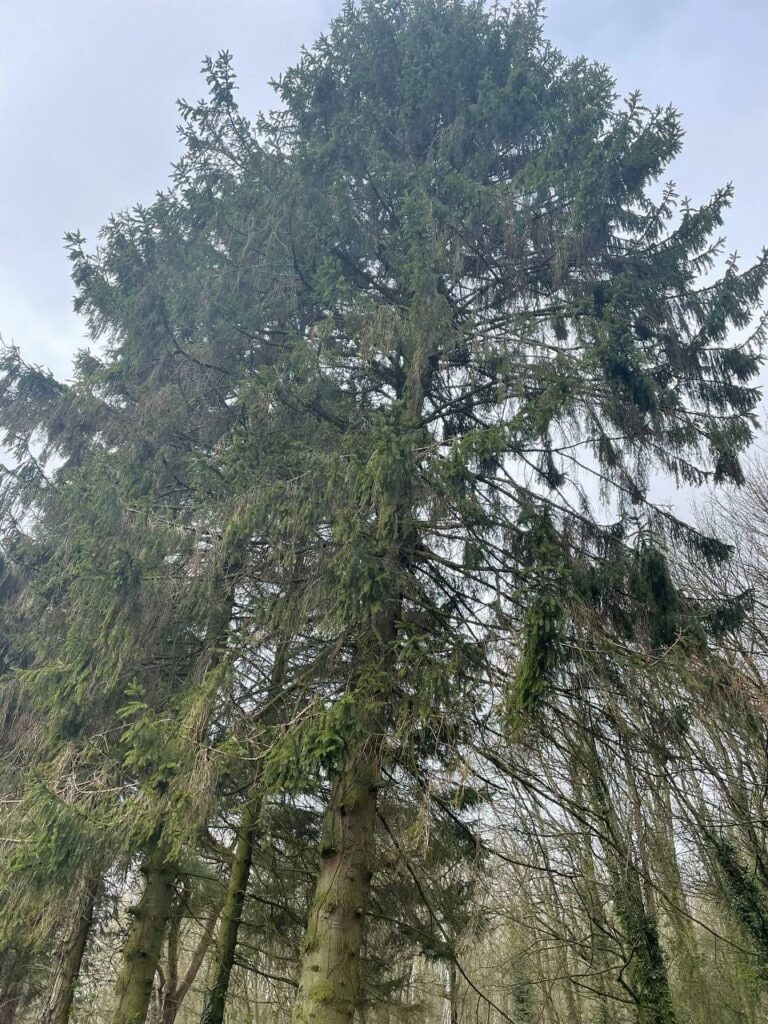
Introduction: Creating a well-shaped, healthy hedge starts with the right care from a young age. At Rye Tree Surgeons, we understand the importance of establishing a strong foundation for your hedges through proper cutting techniques. Training young hedges effectively not only ensures their growth into a robust and attractive feature but also enhances their overall health and longevity. This blog post explores essential techniques for training young hedges and offers practical advice to help you achieve the best results.
- Understanding the Importance of Training Young Hedges
Early Development
- Establishing Shape: Training young hedges helps to shape their growth from an early stage. This early intervention ensures a uniform, dense hedge that maintains its shape as it matures.
- Promoting Health: Proper cutting encourages healthy, balanced growth, preventing issues such as leggy branches or sparse areas that can occur if the hedge is left untrimmed.
Long-Term Benefits
- Aesthetic Appeal: A well-trained hedge enhances the visual appeal of your garden, providing a neat and structured boundary or feature.
- Maintenance: Starting with proper training reduces the need for extensive corrective pruning later, making ongoing maintenance easier and less frequent.
- When to Begin Training Young Hedges
Timing
- First Year: Begin training your hedge during its first year of growth. The early stages are crucial for establishing the desired shape and structure.
- Growing Season: The best time to start cutting is during the growing season when the hedge is actively growing. This allows you to see how the hedge is developing and make adjustments as needed.
- Essential Techniques for Training Young Hedges
Initial Pruning
- Formative Pruning: In the first year, focus on formative pruning to create a strong framework. Cut back the young hedge to encourage bushier growth and a more compact shape.
- Guiding Growth: Trim the top and sides to promote lateral branching and a dense appearance. Avoid cutting back too hard, as this can stunt growth.
Shaping and Thinning
- Shaping: As the hedge grows, start shaping it to your desired form. Regularly trim the sides to maintain a consistent width and height. For formal hedges, maintain straight lines or specific shapes; for informal hedges, allow for a more natural appearance.
- Thinning: Remove any overcrowded or crossing branches to improve airflow and light penetration. This helps prevent diseases and encourages even growth.
Maintaining Balance
- Uniform Growth: Ensure that all sides of the hedge receive equal attention. Avoid over-pruning one side, which can lead to imbalances and uneven growth.
- Height Control: Regularly check and adjust the height of the hedge to prevent it from becoming too tall or leggy. For formal hedges, maintain a level top; for informal ones, shape according to your preference.
- Tools and Techniques for Effective Cutting
Proper Tools
- Pruning Shears: Use sharp, clean pruning shears for precise cuts. For larger hedges, consider using hedge trimmers or shears for efficiency.
- Loppers: For thicker branches, loppers provide more leverage and cutting power.
Cutting Techniques
- Angle of Cuts: Cut at an angle to encourage faster healing and reduce the risk of disease. Avoid cutting too close to the main stems.
- Avoiding Damage: Be careful not to damage the hedge’s main structure or bark. Gentle, controlled cuts ensure the hedge remains healthy and strong.
- Seasonal Care and Maintenance
Seasonal Considerations
- Spring and Summer: Regular trimming during the growing season promotes dense, vigorous growth. Aim to trim every 6-8 weeks to maintain shape and encourage bushiness.
- Autumn and Winter: Avoid heavy pruning during autumn and winter, as this can stress the hedge and leave it vulnerable to frost damage. Light maintenance can be done to tidy up any growth.
Monitoring and Adjusting
- Regular Checks: Periodically check your hedge for any signs of issues such as pests, diseases, or irregular growth. Address these promptly to ensure continued health.
- Adjusting Techniques: As the hedge matures, adjust your cutting techniques to accommodate its changing growth patterns and maintain its shape.
- Professional Advice and Services
Expert Assistance
- Consultation: If you need help properly training your young hedge, consider consulting with a professional tree surgeon. At Rye Tree Surgeons, we offer expert advice and services to help you achieve the best results.
- Professional Pruning: Our skilled team can assist with training young hedges, ensuring they develop into a healthy, attractive feature for your garden.
Conclusion: Proper cutting techniques are essential for training young hedges and establishing healthy, well-structured plants. By starting early and following the right practices, you can ensure that your hedge grows into a robust and aesthetically pleasing feature.
Call us on: 01797 334499
Click here to find out more about Rye Tree Surgeons
Click here to complete our contact form and see how we can help you with your tree’s needs.